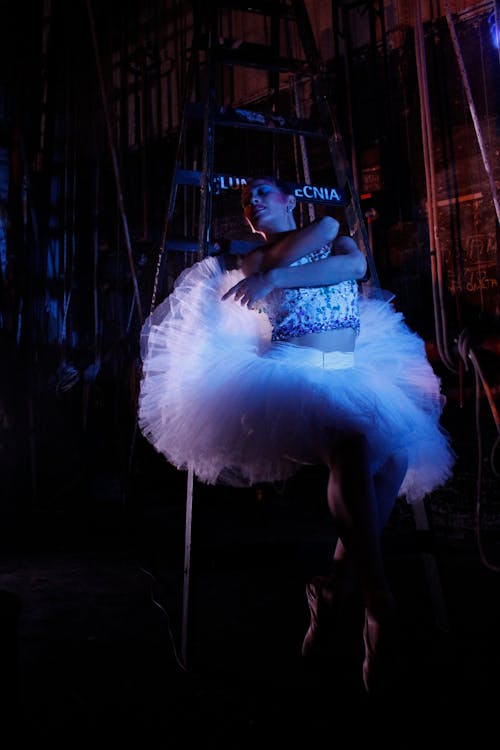Ballet is an exquisite art form that combines athleticism with grace. From the early days of rehearsals in the studio to the glittering performances on stage, ballet dancers sport a variety of costumes tailored to both function and aesthetics. Knowing what a ballet dancer wears is not just about understanding the dance; it is also about appreciating the intricacies involved in this timeless discipline. Let’s explore the attire of ballet dancers at every stage of their journey.
1. The Studio: Essential Training Gear
In the sanctuary of the studio, comfort and functionality prevail. Here, ballet dancers typically opt for leotards, a staple in any ballerina’s wardrobe. These form-fitting garments provide maximum flexibility, allowing for unrestricted movement while also showcasing the body’s lines—a vital element in ballet training.
Leotards come in various colors and styles, from classic black to vibrant hues, and often feature different sleeve lengths and necklines. Many dancers choose styles that best flatter their physique and personal style. It’s common to layer these leotards with tights, which are essential for keeping the muscles warm and ready for an intensive workout.
Tights, both footed and footless, enhance a dancer’s mobility while providing a seamless transition from the leotard to their shoes. Dance skirts can be added for a touch of flair. Short and airy skirts often add dimension to a dancer’s moves, allowing for a flowy appearance that transitions delightfully with every pirouette.
2. Footwear: The Foundation of Ballet
Footwear is crucial in ballet, impacting performance and technique. Most ballet dancers start with soft ballet slippers during their training. These slippers feature a thin sole, providing the dancer with better connectivity to the dance floor, facilitating an optimal understanding of balance and form.
As training advances, dancers transition to pointe shoes. These specialized shoes are made to support a dancer’s weight on the tips of the toes. Pointe shoes are typically crafted from layers of fabric, cardboard, and glue, forming a stiff box that encases the toes. Getting fitted for pointe shoes is an essential rite of passage, and the selection process is meticulous. Dancers often spend time finding the perfect fit, as the shoes must be snug yet comfortable to avoid injury.
In addition to ballet slippers and pointe shoes, some dancers may also wear character shoes for specific performances. Character shoes, with a small heel, allow for easier execution of various dance styles and are often used in ballet’s folk or theatrical variations.
3. Performance Attire: Captivating Costumes
When it’s showtime, a ballet dancer’s attire transforms dramatically. Costumes are designed not only to highlight the dancer’s movements but also to convey the character and emotion of the performance. From tutus to elaborate gowns, the choice of costume is an art in itself.
Tutus, a classic ballet costume, are often associated with traditional works like “Swan Lake.” These skirts are made of layers of tulle, creating a bell-shaped formation that accentuates a dancer’s technique. There are two main types of tutus: the classical tutu, which is short and stiff, and the romantic tutu, which is longer and flowy. Each style serves a unique purpose depending on the ballet’s narrative and aesthetic.
For contemporary ballet, costumes can vary significantly. Dancers might wear sleek bodysuits or flowing dresses that allow for freer movement, embracing the blend of modern dance elements with classical techniques. These costumes often incorporate unique designs, fabrics, and colors, showcasing the creativity of the designers and the productions.
4. Accessories: A Touch of Glamour
No ballet performance is complete without thoughtfully chosen accessories. In many cases, tiaras, hairpieces, and specialized makeup enhance the performance’s visual appeal. Hair is generally styled in a neat bun to keep it tidy and to accentuate facial expressions.
Costumers may add various props or additional elements to the attire based on the character the dancer portrays. This could range from flowing capes to delicate gloves, each piece meticulously crafted to contribute to the story being told on stage.
5. The Evolution of Dancewear
In recent years, ballet attire has witnessed significant evolution. With the blend of genres, dancewear has become more inclusive and diverse. Designers are now creating hybrid costumes that fuse classical elements with modern aesthetics, often showcasing striking colors and innovative materials.
The introduction of durable, moisture-wicking fabrics has revolutionized training gear, making it more practical for daily wear. Moreover, the organic and sustainable fashion movement influences costume creation, prompting designers to source eco-friendly materials without compromising style and elegance.
In Conclusion: The Language of Dance Attire
Every piece of clothing that a ballet dancer wears—from the leotard to the magnificent tutus and beyond—tells a story. It amplifies the grace of their movements and contributes to the overall choreography. Understanding this language of attire enriches the experience of witnessing a ballet performance, allowing audiences to appreciate not just the dancers’ technical skills but also the artistic vision that underscores each production.
As you delve into the world of ballet, remember that every dancer has a unique relationship with their attire, and each costume plays a pivotal role in their artistic journey. Whether you aspire to dance or simply admire the beauty of the art form, recognizing the details of ballet attire enhances an appreciation for this age-old tradition.

